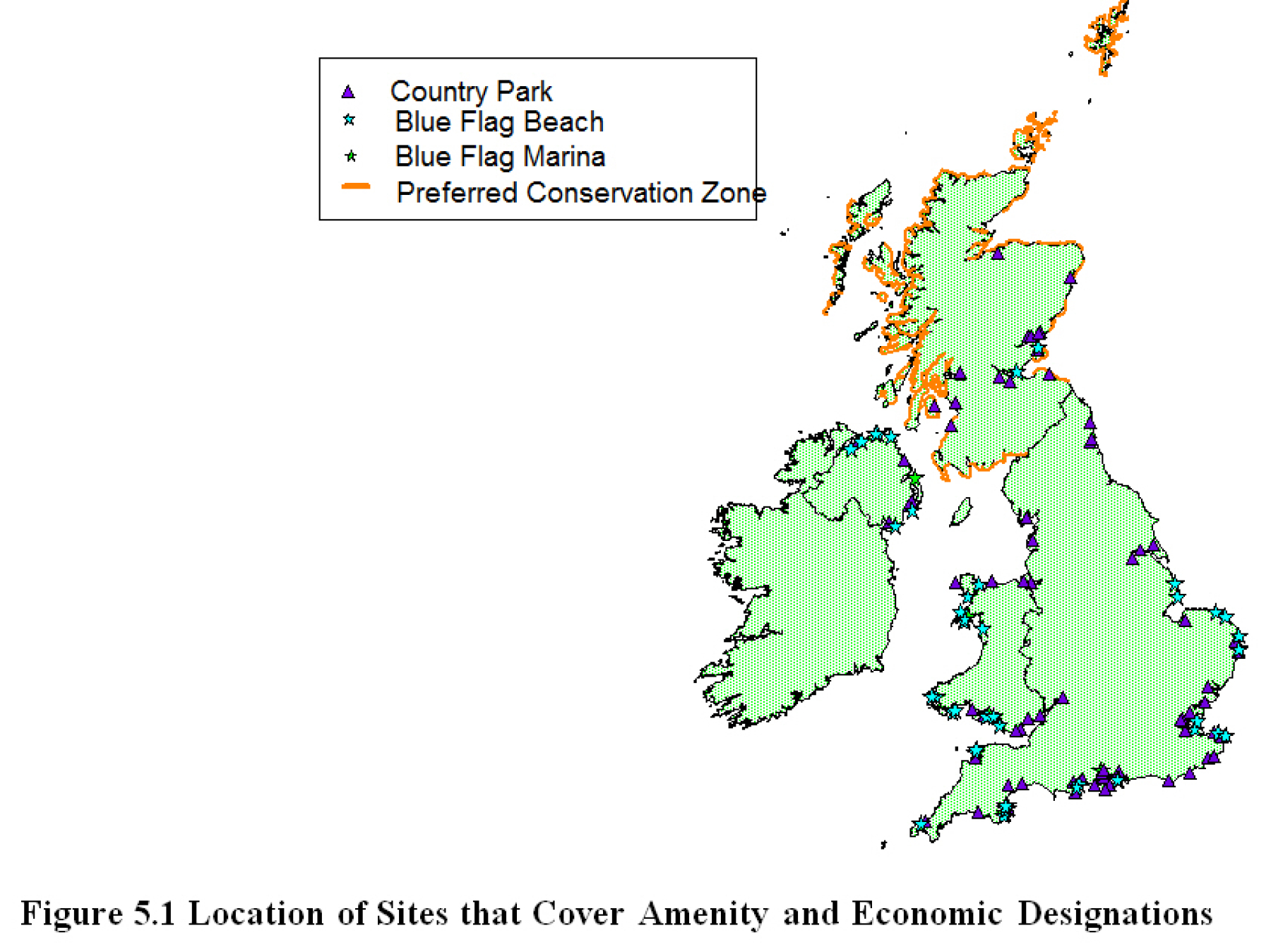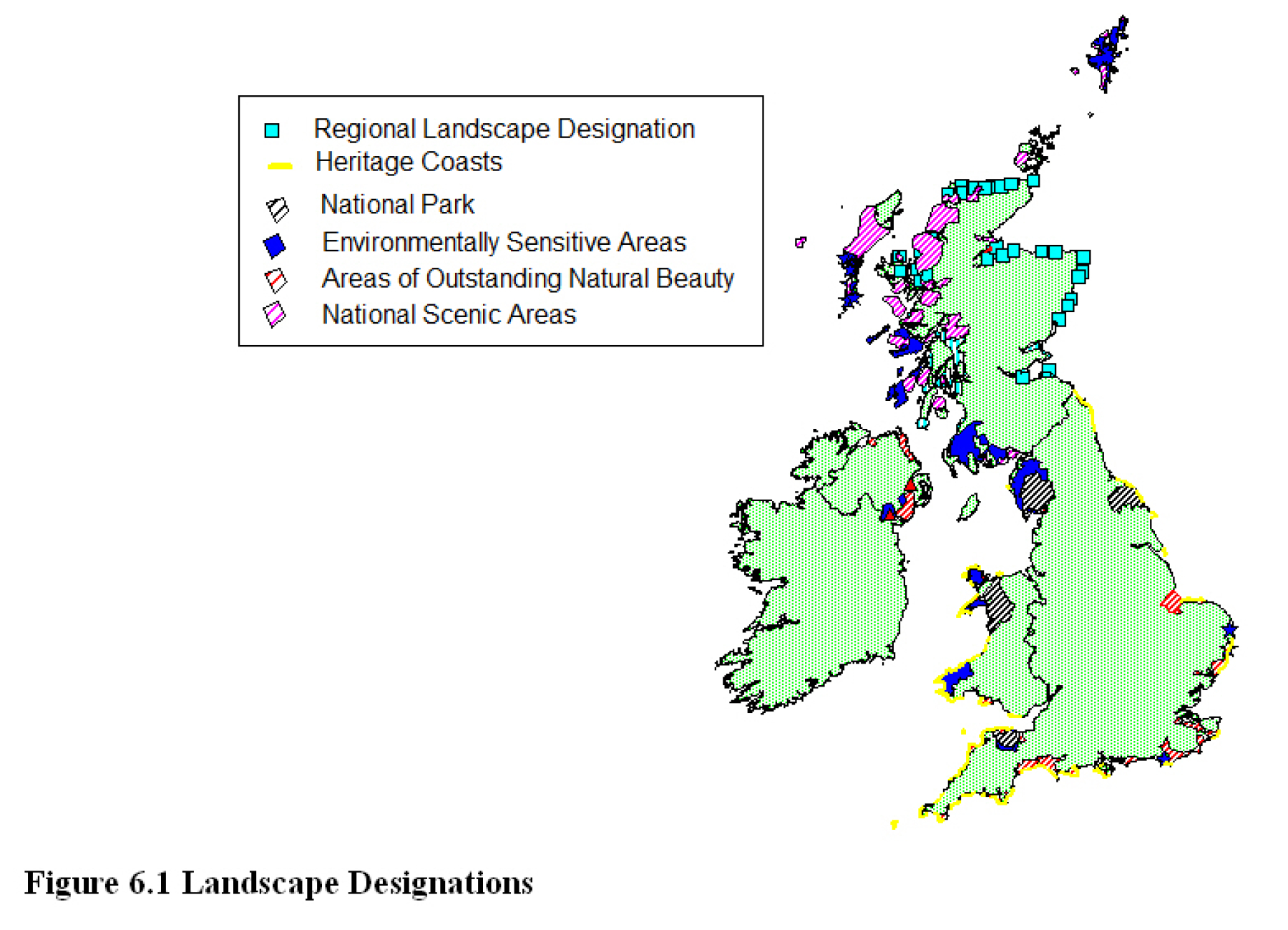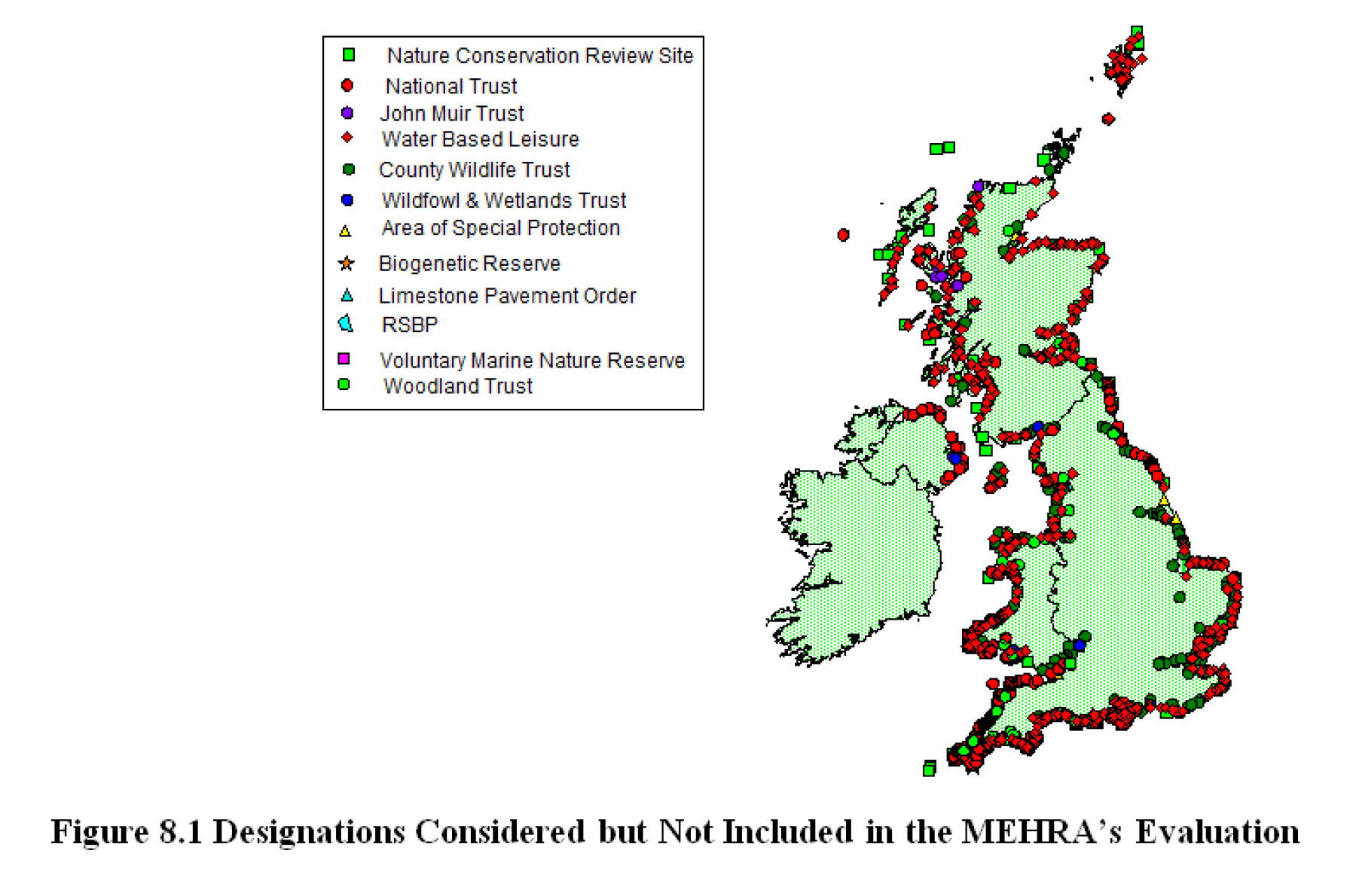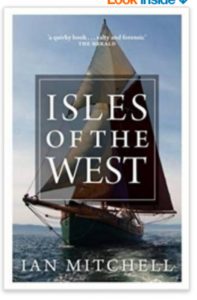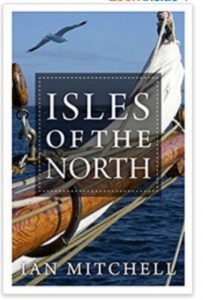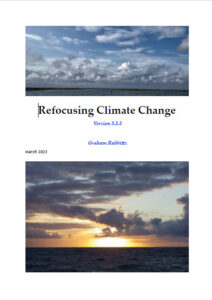
This page existed in my last two websites. I have kept it here, but I am cautious. Perhaps I am becoming a Grumpy Old Man! The trouble is that, having reviewed what I wrote many years ago, I have found very little need to change the text.
I do not like the Marine and Coastal Access Act. It is too big and too complicated. There is some good in it, but I fear the Law of Unintended Consequences. I am sure it is not good news for yotties. The idea of the Solent being run from Newcastle makes me shudder, much as I like Newcastle. The yachting community is very dependent on the vigilance and skill of the Royal Yachting Association to protect their interests. All active yachtsmen should be individual members to ensure that Government continues to pay attention to RYA comment and advice.
During the consultation about the Marine Act I expressed concern about the risk that the public could be prosecuted for actions that they were unaware constituted an offence. I suggested that the designations structure was too complicated, and some form of envelope, perhaps called a Marine Protected Area could be used to simplify the presentation to the public. So far the MPA has not evolved in that way. Explore the MPA tab for more.
I remain suspicious of the whole environmental industry. Before new laws are introduced. all kinds of assurances are given. Afterwards, a kind of eco-
It is easy to accuse the environment industry of seeking to confuse by flooding the public with information in numerous consultations. That is unfair, but Consultation Fatigue is a real, and seemingly endless, problem
One specific problem arises from our lack of knowledge concerning marine ecosystems. Where we do not know, we must apply the Precautionary approach. It is just too easy to misinterpret this as a requirement for scientific proof that no harm can ever occur –
I still regard designations as theft. After all if you take something away from another person, without asking. for your own benefit, and without compensation, what else can it be called? Virtually the whole of UK coastline is designated by one or another of the 42 environmental designations of which more than 12 are statutory. These are listed on the Designations tab. An excellent analysis of coastal designations was carried out in a report commissioned by the Dept for Transport who were trying to find an objective method for selecting the Marine Environmental High Risk Areas (MEHRAS) proposed by Lord Donaldson after the Braer accident in Shetland. The report has disappeared from Government records, so you can click on the link below to download the copy which I kept.
What is not generally realised is just how much coastal activity contributes to the UK economy. In a report sponsored by the Crown estate titled “Socio-
After 16 years of retirement, I re-
But it is for people more energetic and younger than me to realise that Yes Minister! got it right, and to try and defend basic, simple freedoms. However, some of the source material that I used, which is fast disappearing into obscurity has been added to the site for future reference.
If you are confused about all the environmental designations, have a look at “Do you know your MCZ from your SAC?” (in the Designations tab) which I first wrote as a blog for Solent Protection Society. The same page also contains links to the main government environmental agencies.
Over the years, I have had a peripheral involvement in climate change. My current views are expressed on the Climate change tab.

Keyhaven
Whenever I start talking to my friends about environmental designations. their eyes quickly glaze over. They do not understand the difference between UK and European regulations, or even the difference between statutory agencies and NGOs. And they don’t really care.
So, during the consultation on the Marine Act I suggested the idea of an ‘envelope’ that might be called a Marine Protected Area into which all the statutory mechanics could be parked, almost out of sight of the public. The idea was that it would place an obligation on the statutory bodies to explain in language that the general public could understand
–
–
–
–
–
Consideration should also be given to adding information about such areas to electronic charts and other media apps. This would have to be done in such a way that this information could be suppressed so as not to detract from the primary purpose of the electronic information (e,g, navigational charts where the primary purpose is navigational safety).
Providing information to sea users who would not (in the normal course of events) have access to electronic devices (e.g. canoeists, speedboat and pwc drivers) needs further consideration.
All this was discussed in a Dept of the Environment (now DEFRA) committee prior to the Marine Act (in the late 1990s), but progress to date has been almost non –
My discussions with appropriate agencies and companies in the Marine Industry have indicated a willingness to cooperate if (and only if) they are given a clear lead by government.
Sadly the MPA concept has been used to create a bureaucratic tick box monitoring system. There is some advice on the Natural England website MPA pages, but much of it was aimed at environmental professionals and is almost opaque to the general sea users. The Solent European Marine Site advice for example is 127 pages littered with latin species names.
Surely they could do better?
The moment designation and regulation of a site is introduced, a mechanism for collecting taxes is also created. Bureaucrats are drawn to such an opportunity like moths to a flame.
Here is a case study which, fortunately, has been resolved, but only as a result of vigilance by individuals and help from RYA.
In 1995, before anybody had noticed, legislation was well advanced through the French parliament to tax anyone anchoring in designated areas in France.
According to Noonsite, the international cruising website,
“The controversial tax on anchoring/mooring in large areas of French territorial waters has been re-introduced and has passed its first reading by the Chamber of Deputies.
“This bill is part of the new territorial organization of the French Republic (NOTRe). The French Government has proposed, without any consultation with the boating or marine industry, to impose a mooring tax on any vessel moored or anchored inside a Marine Protected Area. These marine protected areas apply to about 25% of the French coast.
“The proposal is for a tax of 20 euros/metre/per day. This means up to 100 euros per day for a 5m motorboat, and 300 euros for a 15m yacht. With such a tax, no boat is going to risk mooring or anchoring in an area where such fees are applied.”
There was more detail on the Noonsite website, including a link to a pdf map which roughly listed the 25% of the French coast that would be affected. The document is not totally specific, but this anchoring charge could apply to
● Several sites in Bay of St Malo
● Ile de Brehat, Treguier and Lezardrieux
● Les Sept Iles
● Several sites in Bay of Morlaix
● Ile de Batz
● Areas near L’Aberwarch
● Much of Iroise including Ushant, Tas des Pois, Ile de Sein
● Parts of the Rade de Brest
● Areas near Morgat and Douarnenez incl Anse de St Hernot
● Ile de Glenans, Ile de Groix, Belle Isle, Houat,
● All of Morbihan
● Ile d’Yeu
● Pertuis Breton, Ile de Re, Pertuis d’Antioche, Ile d’Aix
……. And many more (incl lots in Mediterranean France)
I asked the RYA what they could do about it. RYA commented as follows
“The RYA is not in a position to lobby the French legislature in relation to domestic legislation, although no doubt our French equivalent (the FFV) will do so.
“The 1982 UN Convention on the Law of the Sea prohibits coastal states from levying charges on foreign ships by reason only of their passage through the territorial sea and such “passage” includes anchoring only insofar as it is incidental to ordinary navigation (e.g. awaiting a favourable tide). UNLCOS does not, however, prohibit the authorities within a coastal state from charging foreign vessels for anchoring for other purposes (e.g. awaiting the next charter or cargo or recreational activity) or, indeed, from charging domestic vessels.”
“If the legislation is adopted then we will endeavour to provide as much information as possible for boaters wishing to visit France. RYA members will then need to decide whether they wish to visit the various marine protected areas and pay the requisite fee or go elsewhere!”
I expressed the hope that the RYA Cruising Committee would take up the matter through appropriate European channels.
The RYA’s policy on marine protected areas includes the following statement:-
“Statutory management measures should not be imposed unless it can be demonstrated that they are enforceable and will be enforced. Such measures must be effectively communicated to those likely to be affected, using methods appropriate to the activity”.
The statement is intended to support the RYA’s long-standing proposition that legal restrictions on anchoring etc that might arise from the designation of marine protected areas should be appropriately charted and/or marked.
If only that were EU regulation or advice to Member States!
The RYA did offer any support to their French counterpart. About 6 months later the French proposal was dropped. Which only goes to show that vigilance pays. I will never know how important my raising the issue with RYA was; nor the extent to which RYA offers of support motivated their French equivalent to act. But every little must help.
It would be foolish to pretend that environmental decisions are easy. The whole ecosystem is interconnected in complex and strange ways – a concept that probably derives from James Lovelock’s Gaia hypothesis (It looked weird when he first put it forward).
But to look at only one current example, the consultation on the Marine Bill (which eventually led to the Marine and Coastal Access Act) exceeded 250 pages. Only an eco- geek would tackle it. And there are dozens of consultations going on all the time. If the proposers try to simplify, we complain about lack of evidence (especially scientific data); but if they provide it, we complain that there is too much.
Perhaps we ought to learn from David Mackay, whose brilliant book “Sustainable Energy without the Hot Air!” is widely acclaimed as an example of how to present a very complex argument. (It is further explained on the Climate Change page)The key attributes are
● finding a numerical metric on a scale we can grasp to compare ideas and strategies.
● avoidance of superlatives and the use of massive numbers (trillions, billions and even millions are beyond most people’s grasp)
● layering the argument into
1. A brief very easily readable summary
2. A more detailed development of the argument based on numbers which, at this stage are asserted to be true
3. An explanation of each number used
4. A set of literature references
If you ever hear a phrase like “One of the most important…..” you can be forgiven for doubting that the data exists. Remember that sites are designated because species are threatened; and designated because they are abundant too. It is all most contusing.
An additional problem is that only the large NGOs and consultancies have the skill and resources to participate in all the consultations (Organisations like RSPB maintain an office in Brussels). Inevitably this means that they shout loudest and the advice given to government is inevitably weighted. The diffuse mass of the public never finds a voice unless there is a successful twitter or facebook campaign. It is difficult to know what can be done to avoid the problem, and it has to be said that MMO are trying their best with regard to the consultations on Marine Planning.
In the early 1990s, the amount and scope of environmental legislation increased dramatically. In particular, the Habitats Directive, emanating from Brussels, had to be implemented in the UK by the Habitats Regulations.
Industry in general, and maritime industry in particular were concerned about the potential abuse of the Precautionary Approach which must be applied in those cases where scientific data is incomplete. A clear statement was hammered out and included in the original Habitats Regulations published in 1994. Here is an extract.
In paragraph 2.7 of the Guide to the Preparation and Application of Management Schemes under the habitats regulations it says:
“This [the precautionary principle] can be applied to all forms of environmental risk. It suggests that where there are real threats of serious or irreversible environmental damage, lack of full scientific certainty should not be used be as a reason for postponing measures to prevent such damage that are likely to be cost effective. It does not however imply that the suggested cause of such damage must be eradicated unless proved to be harmless and it cannot be used as a licence to invent hypothetical consequences. Moreover, it is important, when considering the information available, to take account of the associated balance of likely costs and benefits. When the risks of serious or irreversible environmental damage are high, and the cost penalties are low, the precautionary principle justifies a decisive response. In other circumstances, where a lesser risk is associated with a precautionary response that is likely to be very expensive, it could well be better to promote further scientific research than to embark upon premature action.”
Industry could live with this statement provided it was used sensibly. But it is a sad fact that when the regulations were updated, this statement was quietly ditched. Was it a little inconvenient for the environment bureaucracy?
Main Environmental Agencies
There are 4 main government agencies with responsibility for the marine environment. In addition there are numerous ‘Competent Authorities’ such as Harbour Authorities and Local Councils who must interact.
Below are links to the websites of the principal Government Agencies.
Designation Interactions
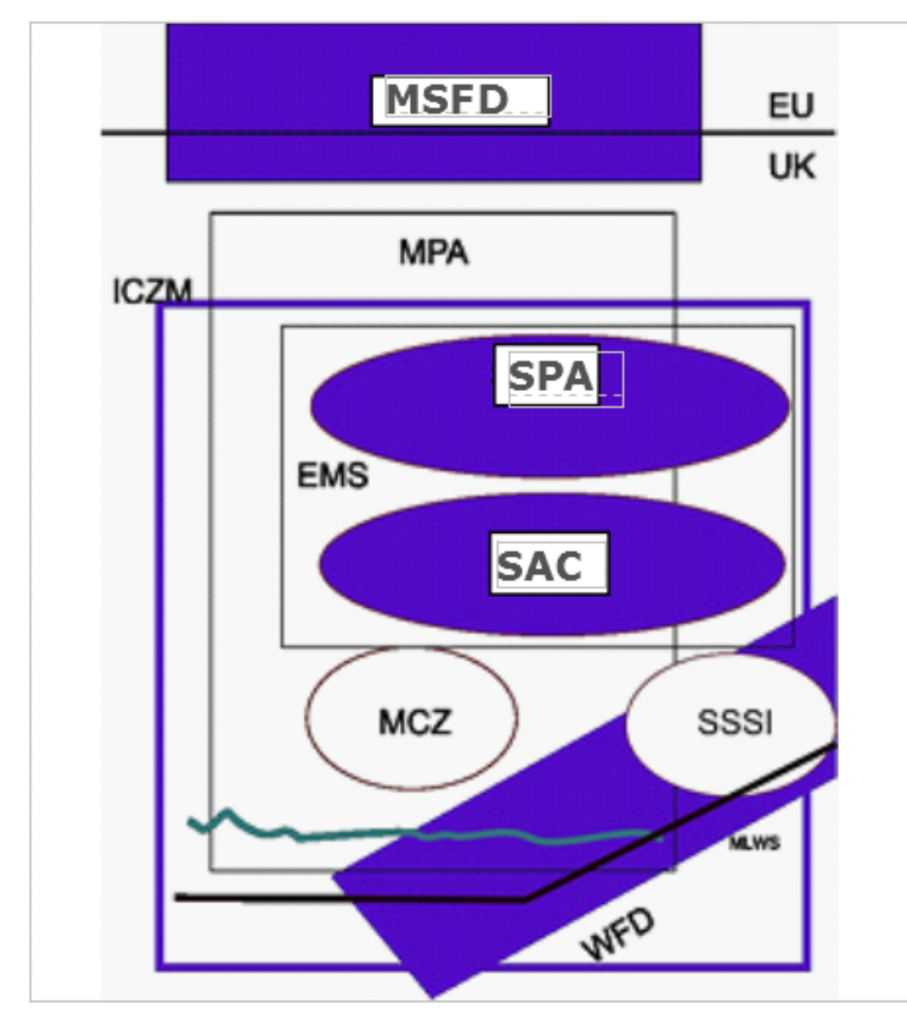
Do you know your MCZ from your SAC?
A brief guide to currently fashionable ecobabble
Does it matter to me? When I go for a walk on the beach at Lee on Solent; or sail my boat into Keyhaven, are there things I should know? The short answer is ‘yes’ but identifying protected zones, and the regulations that attach to them is far from easy. The eco-
The blue items in the diagram were inspired by Brussels, and the rest are the way in which the UK implements the Directives and tries to meet its own aspirations.
UK zones
SSSI (Site of Special Scientific Interest) : The oldest of the designations, SSSIs depend on an agreement between Natural England and the landowner on the way in which Potentially Damaging Operations are to be managed. The area of all marine SPAs and SACs between high and low water has been designated as SSSI.
MCZ (Marine Conservation Zone): The newest of the designations created by the recent Marine Act. It plugs a gap because the SSSI cannot be extended below low water springs (no single user-
EMS (European Marine Site): A UK administrative “envelope” to contain the European SPA and SAC Directives. The associated Habitats Regulations place an obligation on all statutory bodies (known as Relevant Authorities) to use their existing power to further the aims of the Directives. The regulations permit the Relevant Authorities to generate a Scheme of Management for the EMS. For the Solent this is known as SEMS (Solent European site Management Scheme).
MPA (Marine Protected Area): Another UK administrative “envelope” comprising EMSs, plus MCZ and wetland areas designated under the international Ramsar convention. While there seems to be an obligation for the conservation bodies (such as Natural England) to periodically report progress to parliament, there has been no serious attempt to explain to the public what the sites are designated for, how to identify the areas, and what the public should and should not so in such areas (which may vary with the season). This would eliminate the need for the public to understand the complexity of the underlying designations. So far this is an opportunity missed.
European Zones
WFD (Water Framework Directive): A Directive mainly aimed at improving the status of European river catchment areas in terms of ecology and water quality from source to well out to sea. In the UK the Directive is largely implemented by the Environment Agency using a variety of regulatory regimes. Clearly WFD areas overlap the EMS areas, and the interaction between them is at best fuzzy.
SPA (Special Protection Area for Birds): One of the oldest European ecology Directives. Virtually every estuary in the UK is designated as either SPA or SAC (or both). Designation depends on there being more than 1% of one(or more) of the European population of the listed species (which begs the question that if you make the area big enough it is bound to contain 1%!). In the UK estuary designation has been by drawing a line across the mouth of the estuary, unlike the rest of Europe which designates only shorelines. The European Court has confirmed that the UK is right, but so far no other EU country has complied.
SAC (Special Area of Conservation ): The Directive matches the SPA, but covers habitats and non-
ICZM (Integrated Coastal Zone Management): For years ICZM has been a kind of ecological Holy Grail. Now there is a new Directive that tries to define its scope and bring the various aspects of coastal zone management together. Its effects have yet to develop. It will mainly be concerned with how various authorities work together, so will probably not directly affect the sea user, whether afloat or near the beach. Its effects may filter down onto site management measures
Brexit Effect?
At the time of writing, it is the declared intention that the UK will maintain environmental protections. It is perhaps a forlorn hope that a process of simplification and clarity could also take place
.
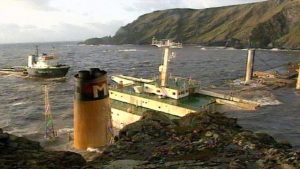
Braer off Shetland
When the tanker Braer was wrecked in Shetland, a public Inquiry was led by Lord Donaldson. One outcome was that he called for the creation of Marine Environmental High Risk Areas. These were seized on by the environmental community in their usual promotional, emotive way. But DfT Shipping Policy Division were having none of that. They commissioned Safetec, a consulting company based in Aberdeen, to carry out a quantitative assessment of risk.
Shipping patterns were analysed to establish the level of threat, and this was matched against the vulnerability of various parts of the coastal waters
Their report came out in 1999, and it remains an outstanding piece of work, When ABP Mer, a company of which I was proud to be a Director, had tried earlier to introduce the same rigorous scientific approach to the designation of European Marine Sites (SACs and SPAs), the work was dismissed on the grounds that “we didn’t do it that way”. The tragedy is that the results of the scientific approach were not THAT different to the subjective choice method that had been adopted, but since the earliest designations there have been arguments aplenty. OK, there was some subjectivity in choosing the weighting that had to be given to the various factors, but even that was a clearly focused debate (and for lack of anything better, ABP Mer gave each factor equal weight). It could all have been so much better.
Anyway, the Safetec report is clearly in the public domain (though it has been removed from the DEFRA website during a recent cleanup). One of its sections, Appendix 4, fulfilled the valuable task of identifying all the designations in the coastal zone as part of the process of identifying areas alleged to be at risk. The results are shown in the gallery below.
[/fusion_gallery]What Appendix 4 shows is that, contrary to assertions that there is little protection in the coastal zone, most of the coast is covered by one or more of the 42 different designations the report identified. To see more detail, click on one of the seven map icons to see the extent of the main classes of designation or vulnerability
I regard the Safetec report as being an exemplar of how environmental risk should be assessed. Moreover, although more than 20 years have passed since the Braer accident, I doubt that the conclusions would be very different now. So, because the report seems to have disappeared from Government archives, I am making it available from this website. Be warned! It is a very big file and will take several minutes to download.
Click on this link to download: MEHRAFULL
Note that since the report was written, the Marine Nature Reserve designation has been withdrawn. As a result of the Marine Act new Marine Conservation Zones have been established.
An attempt is being made to group designations in the same area into Marine Protected Areas that may be more understandable to the general public.
On Dec 23rd 2000 I was in a meeting at the English Nature marine office in Peterborough. We were trying to reason with the conservation bureaucracy. The details do not matter. For 10 years I had been setting up the environment department within Associated British Ports ( a group of 22 ports that handled 25% of UK seaborne trade), and watching the inexorable acquisition of power by the environmental agencies and quangos and major professional environmental charities such as RSPB. Half way through the meeting I leaned back in my chair and thought ‘I do not want to do this any more’. Fortunately I had already told the company of my intention to retire, which I did in May 2001.
I care about the environment, but as the Duke of Edinburgh said in a BBC interview that “there is a difference between being concerned about the conservation of nature and being a bunny hugger”.
The conservation bureaucracy has extended its tentacles into many areas, often through the use of pseudo science and appeal to an emotional reaction to environmental events (for example by building their case round ‘cuddly’ species such as seahorses). No matter how much power they have the environmental professionals have sought more.
The situation is frustrating, and it is hard to see why it has happened. So for about the sixth time I re-read Iain Mitchell’s excellent book “Isles of the West” in which he explores the same issues with respect to the islands of the west coast of Scotland. It is fascinating because each island encapsulates a different environmental management issue in an almost clinically isolated form. The issue can be seen clearly. Such clarity cannot be seen in the crowded south of England where the issues tumble over one another. But the same principles apply. During Iain’s cruise, he challenges RSPB (who considered suing Iain), Scottish Natural Heritage, and the Lairds and makes a strong case for listening more closely to local needs and preferences. Towards the end of the book, he ruminates on what he has learned in a pub in Oban:
“… I bumped into two friends who are quite senior in the Forestry. As the rain splashed in brightly lit puddles in the street, we discussed the problem of conservationism in the Highlands. Why has something so beautiful and wise in theory turned to dust and ashes in practice?
Jim, a forthright Scotsman , was of the opinion that it all came down to the peculiar character of the people that idealised nature, but from an emotionally safe distance. He gave the example of modern wildlife magazines which, he said, have evolved into a form of non-erotic pornography. Mother Nature is stripped of her modesty and exposed to the vulgar gaze. It is all cold, glossy, exploitative and lascivious. You may look, but you better not touch. They are designed for what he called the dirty anorak wing of the bird table owning classes.
John, an astute Englishman….took a thoughtful sip of his drink. His explanation was completely different. ‘The fact is that in Scotland today we have a sort of one party state’, he said. ‘There is only one view of conservation issues, whether it is birds, which I do not know a lot about, or Forestry which I know quite a lot about. This country is run by the Scottish Office so that, at a political level, it is not government and opposition, it is just insiders and outsiders, like a medieval court. Its not exactly democratic. Groups with serious lobbying power find it easy to get the inside track, whereas others, like your crofters, find it almost impossible. The result is that power devolves to careerists, like Jim and me, who have wives, children and mortgages and work for the quangos and the big charities. Local communities didn’t fight to begin with, when they might have had some effect, because they trusted us. Now we are solidly entrenched and they don’t fight because they know it is hopeless. We can do more or less what we like, or should I say what Edinburgh likes. The Scottish Office loves it.”
Provocatively, Iain then pointed out that “In another country at another time both nature conservation and forestry had been popular concerns of a well-known authoritarian regime” (the Nazis). “Is there a connection”, he asked” between idealism and authoritarianism? Are people who do not trust others to behave as they want them to, inherently prone to ruthless compulsion in their dealings with fellow humanity? If the basic joy of life in the Hebrides is its freedom, both physical and spiritual, then the invasion of the conservationists must be the most serious threats the islands have faced since Culloden and the Clearances.” All three of them were horribly conscious of the ubiquity of the conservation bureaucracy. “
I believe the same sentiments apply with equal force in England.
I can also recommend Iain’s second book “Isles of the North” in which he cruised to Orkney and Shetland before crossing to Norway and discovering the more flexible and people friendly ways the environment is managed there.
I am not optimistic seeing much progress in my lifetime.
My Environmental ‘Gurus’
 Dieter Helm: Oxford Economist and Chair of the Natural Capital Committee
Dieter Helm: Oxford Economist and Chair of the Natural Capital Committee
 David Mackay: Cambridge professor and adviser to the Dept for Energy and Climate Change (died April 2016)
David Mackay: Cambridge professor and adviser to the Dept for Energy and Climate Change (died April 2016)
 James Lovelock: Fiercely independent scientist who championed the ‘Gaia’ theory that led to the eco-
James Lovelock: Fiercely independent scientist who championed the ‘Gaia’ theory that led to the eco-
Can there be anyone left (apart from Donald Trump and his acolytes) who doubts that strange things are happening to our climate? Yachtsmen know it is windier each year. And we have all seen increasingly frequent extremes of weather, winter and summer.
Climate change and energy supply are inextricably intertwingled (!). But do recent short term weather trends point to a major change in Climate?
I have been involved on the fringes of these problems since the mid 1970’s when the ‘Peak Oil’ theory was resurrected and we worried about oil running out.
However laughable it seems now, it was the recent ‘Peak Oil’ theory that led to the current dash for renewables. But as Dieter Helm has pointed out the Renewable Directive has had some perverse effects. And there is no doubt that present renewable technologies, on their own, can NEVER solve the problem – they are too diffuse.
My current views are built upon several different sources including
1:the 2019 IPCC report and subsequent updates
2: David Mackay’s book “Sustainable Energy Without the Hot Air” (SEWTHA). It is freely available on the Internet. This book is regarded as essential reading by many leading scientists and also by leading environmentalists. The book can be downloaded free – see link. A couple of Davids presentations on how to understand Climate Change are also included in the list.
David Mackay had the gift of expressing the massivley complex problems associated with fossil fuels in a comprehensible, and comprehensive way. There is more detail by following this link.
3: Dieter Helm’s book “The Carbon Crunch” sets out his belief that the priority has to be the elimination of coal from the energy mix. Various presentations that he has made are available on You Tube. In 2019, Dieter published a series of lectures arguing that the Kyoto and Paris agreements on Climate Change action had failed. To access the 5 lectures, click on the button. The lectures analyse the concept of “Zero Carbon” and its consequences. The final lecture proposes an organisational process that builds on the 25 year environmental plan published in 2018. This is no longer consistent with the upgraded goal of the United Nations to achieve Net Zero by 2050. Clearly there is a need for some serious rethinking, possibly including a serious re-appraisal of climate change science (are the IPCC models right?). If these lectures are viewed in conjunction with the 2022 report by Professor Kelly (see further down this page), some idea can be gained of the enormity of the task that confronts us.
4: James Lovelock: I have included a You Tube presentation and an interview with James Lovelock. They are whimsical in some ways, but have a grain of hard common sense and acute observation running through them.
There are many other possible lines of exploration, including
– the future of Shale Gas
– the role of nuclear
– can fusion ever deliver?
– unexploited technologies such as thorium reactors
We are beginning to realise that a changing climate is much more complex than we thought. Many years ago the United Nations created the Intergovernmental Panel on Climate Change (IPCC). Its brief was to examine the role of human activity in creating climate change. They were not tasked to look deeply into natural climate cycles.
While there is little doubt that we have experienced a period of warming in the last couple of decades, I have been impressed by the work of Steven Koonin. As an eminent scientist who had worked within the IPCC structure, he found reason to dig into the science that underlies IPCC activity. Few of us, and few journalists or politicians read anything other than the executive summaries before reporting to the public and debating the issues. Steven Koonin found that in many important cases, the process of assembling a large number of high quality scientific reports into Assessment Reports (thousands of pages long), which in turn form the basis of the Executive Summaries, there was a sort of game of Chinese Whispers (or if you are American a game of Telephone) going on. He found that claims reported to the public were not supported by the underlying science. Generally it was not being deliberately misleading, but by slightly exaggerating and editing complex stories into eye-catching headlines, the science was being misreported.
So Steven Koonin is most definitely not disagreeing with the science. In his book “Unsettled?” every argument is developed by referring to the underlying science. With a strong background in computer modelling, Steven Koonin also called into question the lack of reporting of error ranges in model results, and the difficulty of modelling clouds and water vapour. He also quotes IPCC to support his view that the present models, while useful for trying to understand climate processes, are not up to the job of producing meaningful forecasts.

In addition to reading Steven Koonin’s book, I have spent some time studying well-researched reports and produced a summary of my findings titled “Refocussing Climate Change“. The time has come to rethink our climate assumptions as summarised on the slide shown here taken from a presentation by Tom Gallagher, (links are in my report)
Much of what follows was written before I prepared “Refocusing Climate Change”. I do not believe there is a need to alter ir, but it needs to be viewed with a new caution.
In early 2022, the Global Warming Policy Foundation (GWPF) sponsored a report by Michael Kelly , titled ” ACHIEVING NET ZERO a report from a putative delivery agency” that examined the practicality of achieving net zero carbon in the UK by 2050. While I have had a sceptical view of GWPF in the past (some of its original founders were unrepentant raw meat climate change deniers), it seems to have matured into an organisation purporting to address issues realistically.
As we move into the second half of 2022, a paper titled “The retreat from Net Zero” by Dieter Helm provides a useful, if depressing summary, of the consequences of the war in Ukraine and the energy crisis (which was developing before the Ukraine invasion).
The climate change debate was migrating from the scientific to the political and economic arena.
It is too big a subject to go into further here but the sources and seminars linked from this page may lead you into making up your own mind about what should be done. And you can try your own solution using the model developed by David Mackay . Click here to try for yourself.
David Mackay died in early 2016. I have chosen to leave his material on my site because it is unique, and a tribute to his life.
Dieter Helm’s work on Natural Capital is gradually being absorbed into government policy making.
James Lovelock died in 2022. His delightful gentle, but firm, presentation of ideas will be missed. I value the few samples preserved on this page
Footnote: I recently came across this fascinating interview with James Lovelock. He is always thought provoking! Not sure I buy it completely.



